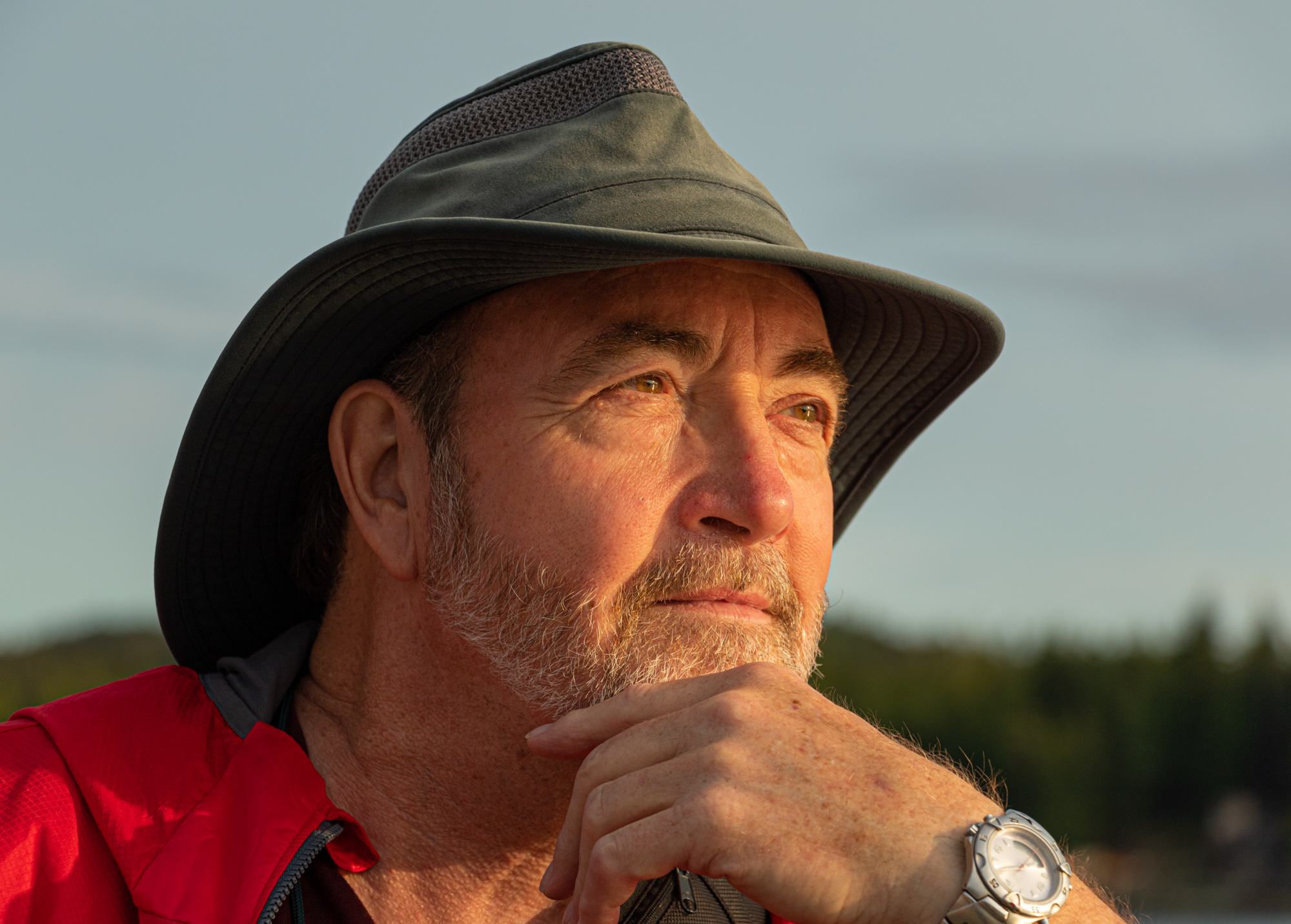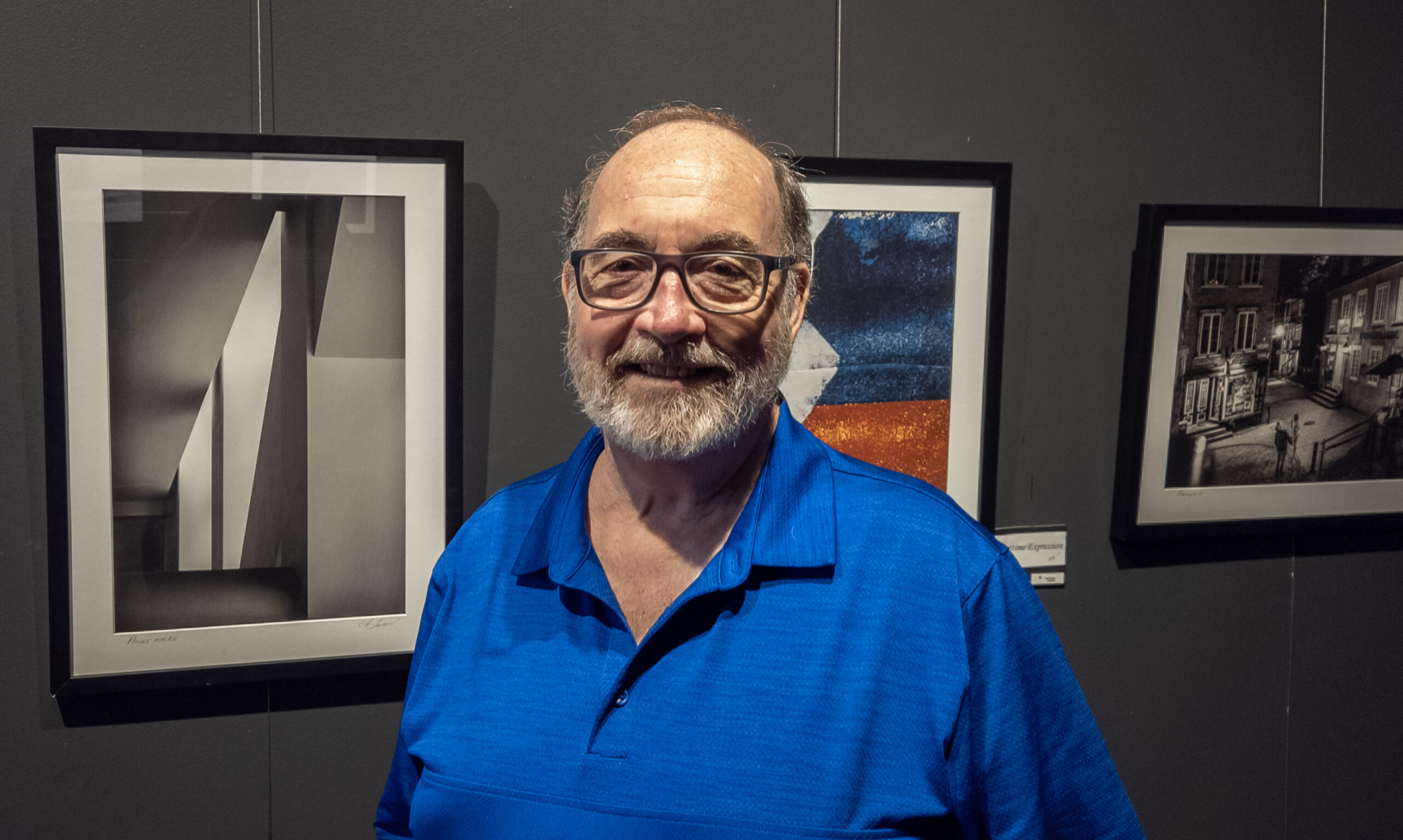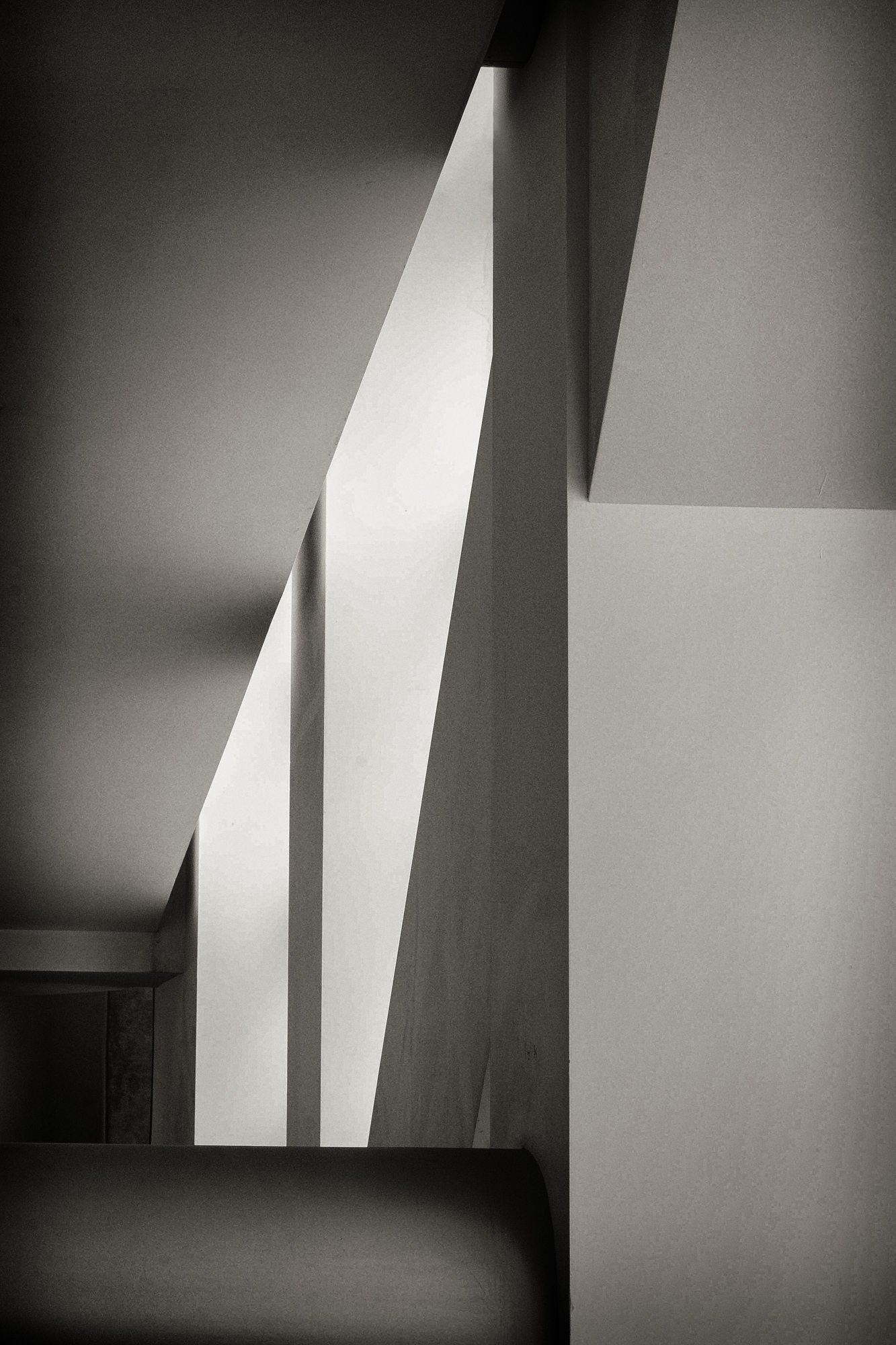Vernisage ( definition) – Preview of an art exhibition, before the formal opening.
Saturday night September 21, 2024 is the date of the vernissage of the art work of Harry Turner in the Spotlight Gallery in the Janigan Studio (located in the north lobby on the house-right side of the theatre).
An Interview with artist Harry Turner
Let’s start way at the beginning. Where were you born and how did you end up in Ottawa?
I was born in Toronto but my father was a traveling sales man so we moved a number of times. Born in Toronto we moved to Belleville, back to Toronto, to Orillia, back to Toronto and then finally to Eastview as Vanier was called then. Since then, I have remained in the Ottawa area.
Where did you study ?
I was in honors biology pre-Med at the University of Ottawa for two years then transferred to Biochemical Technology and finally ended up studying photography at Algonquin college.
How did you get into photography?
Entering third year of biochemistry I had to produce a scientific essay. For my topic I selected the creation of photographic images via photo ionic reactions at the sensitivity speck of silver halides crystals in photographic emulsions. The more I researched the subject, it dawned on me that this was much more interesting then memorizing the Krebs cycle in biochemistry and an old desire to join the camera club in high school resurfaced so I applied to the photography program at Algonquin college.
My first position after graduating from Algonquin college was as a medical photographer at the Ottawa Civic Hospital for three years. From there I moved to the National Research council of Canada’s division of Biological Sciences which involved macro photography, photo microscopy and much in the black and white darkroom printing electron microscope images, X-ray crystallography prints and auto radiographs. In aid of scientific research these images were then assembled into photographic plates for submission and reproduction in scientific journals.
I spent my last 25 years at the National Research Council of Canada as NRC’s corporate photographer. I photographed Canadian scientific research and innovation in labs and facilities across the country for use in papers, magazines, books, websites, and documentaries around the world to illustrate Canada’s contribution to science and technology. It was a rewarding time photographing Canadian researchers to highlight their work and innovation in for example: biology labs, femtosecond laser labs, hydraulic labs and ice tanks for marine research, and more. But best of all I photographed aerospace research where I got to do aerial photography in a wide range of aircraft. One of my favorite photographs I created is a portrait of Nobel Prize winner Dr. Gerhard Herzberg, a copy of which now hangs in the chemistry division at Harvard University. The Canadian mint used this image to strike a gold medal for Scientific Excellence in Canada. Perhaps my most widely reproduced image is a photograph of canola, an oil seed which Canada is famous for worldwide, featured on a Canadian stamp in the biotechnology series.
It was my privilege as well to be a professor with the Part Time Studies program at Algonquin College for 42 years. This was a most rewarding time, and I had the great fortune of meeting a wide range of vastly interesting people. I predominantly taught the Basic Photography program in the old days integrating the dark room as part of the program and then evolving to teaching Basic Digital Photography as the evolution to digital took over. I taught a range of programs there, from Macro photography and Photomicroscopy, Sensitometry and Quality control, Photographic Optics and Light Computations to Materials and Processes. As the digital era dawned, I continued to teach basic digital photography as well as courses in Adobe Photoshop, Adobe Lightroom and towards the end Photographic Composition and Design. I loved every moment teaching at Algonquin however it all came to an end with the pandemic.
Do you pursue any other artistic hobbies?
I have been retired for a number of years and this has allowed me the opportunity to grow in a whole new direction. I have taken up playing the trombone again after a 50-year hiatus. I learned to play the trombone in high school and a number of years ago discovered the Ottawa New Horizons Band. This is a unique organization which has a number of bands at different levels from absolute beginner where they will teach you how to play an instrument and read music, to considerably advanced bands. It is a whole new world socially and musically, and there are musicians of all ages – including a number of my peers who used to play in high school and have taken their instrument up again, whatever that might be. I am in an advanced intermediate jazz band with the ONHB and play the trombone in the Beacon Band, a community band in the east end of Ottawa.
You’ve been doing photography for a long time – how do you keep it fresh?
Photography remains my passion and retirement has offered me the opportunity to create images for myself. I am out every week photographing with a dear friend David Stevenson, who I used to work with at NRC. We have been out almost every Friday for the last 13 years, just the two of us. We have deemed ourselves a photo club of two. We call ourselves The Photographic Society and League of Gentleman Adventurers of the domain of Canada Upper Canada Region or TPSOALOGAOTDOCUCR for short. Some have deemed this pretenshus but I am never anything I can’t spell.
I am fortunate to share many rewarding photographic adventures with the amazing woman in my life Leslie Carlin. She has expanded my horizons to photographing birds, mostly raptors, and most of all shared her passion for Sandhill Cranes. We have shared photography on our travels from Pt. Pelee to Quebec City and Newfoundland, and internationally to Alaska, Ireland and Paris. We will spend next February in Florida exploring many cultural sites and spending considerable time photographing birds new to us.
Photography can be a solitary venture however I find it most rewarding when sharing the time with other passionate photographers, especially Leslie.
I feel extremely fortunate in my life that I was able to have a career as a professional photographer and see and photograph amazing people and research. I have had the honor of being able to share my passion as a professor at Algonquin with many wonderful people interested in learning about photography. And I can also indulge myself in photography for my personal growth and satisfaction. It soothes my soul.
How has your style changed over the years?
Retired, I am able to further follow my desire to create fine art photography. I enjoy landscape photography but most of all my passion lies with abstract and minimalist photography. I seek to photograph what others overlook and do not see. In abstract photography I enjoy finding composition and design in chaos and creating a singular image that draws the viewer’s attention without visual reference to the original subject. Minimalist photography has its attraction in distilling the scene to its essence. It’s most rewarding when someone realises what the subject is and says, ‘I never saw that’ or ‘I never saw it that way’.
Even in this digital world I find the 20+ years spent with film photography and the thousands of hours in the darkroom enhance my ability to see as a fine art photographer. This new digital era allows photographers today to do things that photographers could only have dreamed of in the darkroom, and in many cases, go beyond even their wildest dreams.
I find post processing an important and significant part of my photography. As good as digital cameras are they are still no match for the human eye and very often the image produced is disappointing. It is in postproduction with Photoshop or Lightroom I can bring the image that I saw or I felt to fruition. When I photograph, I envision the final image in my mind as I’m shooting. Oftentimes I am translating that image in my mind to black and white as I’m shooting and use the software to create the image according to my vision.
I greatly appreciate this opportunity to present my images in the Spotlight Gallery at the Ottawa Little Theatre. The only time my images have been exhibited before was an exhibition of my photographs from NRC at the Museum of Science and Technology exhibit entitled Art in Science, or in French En Lumiere. The images were on exhibit there approximately 8 months and then were bundled up and shipped to museums around Canada to be displayed over the next number of years.
This is the first time I have exhibited my personal images, and I am extraordinarily pleased and grateful for the opportunity.
What is your connection to the Ottawa Little Theatre?
Though I have always been cognizant of the Ottawa Little Theatre it wasn’t until perhaps year and a half ago that I attended a play with Leslie and I must say I have been continually drawn in since. We have been to a number of plays, and I am continually impressed with the talent not only on stage but of those behind the scenes as well. I have learned to appreciate the stagecraft and enjoy the performances of the actors and the transitions within the play. As a photographer I quite enjoy the visual composition of the sets, and continue to be greatly impressed with how the lighting is used to sculpt an emotion or impression on stage. So given the talent that resides in the next room I am honoured to have my photographs on display in the adjacent Spotlight Gallery.
It has also been an absolute pleasure working with Venetia. She is the one who invited me to present my images in this gallery showing and has been most helpful and getting it set up. It’s rather fun for me to be able to work in person with someone who had me absolutely enthralled with her character when she was on stage as Grace in the play An Act of Grace. My thanks to her.
What is your favourite piece on display in this exhibit?
Of all the images in my display I am perhaps most proud of the image Planes MMBA (Musée des beaux-arts de Montréal). It is a stairwell from the second floor of the Montreal Museum of fine art and it is a case of seeing the potential of the scene in front of the camera. It is primarily a scene of shapes, of lines and planes, and the way the light falls and describes the various surfaces. The original scene was quite white, light and bright, but by distilling this image in the camera, by removing the rising stairs to the left and the railing just out of view at the bottom, the viewer’s eye is drawn only to the surfaces and textures as I saw them in the moment and envisioned them in the final image. As I photographed the image, I was seeing the final image in black and white – somewhat darker and more contrasted – and it was in postproduction in Lightroom I was able to bring my singular vision at the scene to fruition. To me, being able to present the final image as I saw it and felt it is what photography is all about.
I hope patrons of the theatre enjoy the images during intermission and I certainly look forward to attending this and many more plays in the future at the Ottawa Little Theatre.



